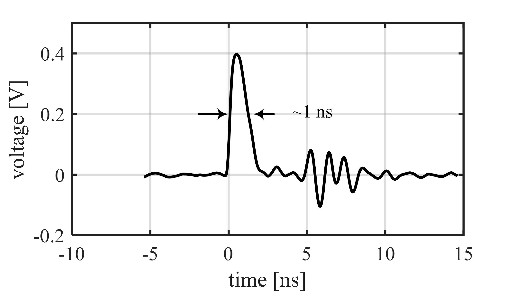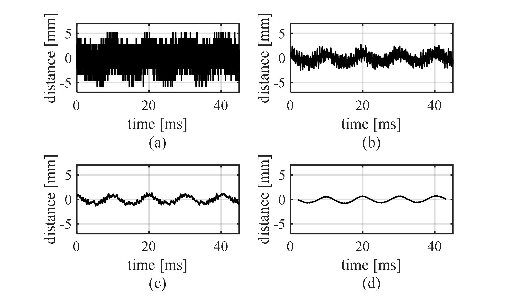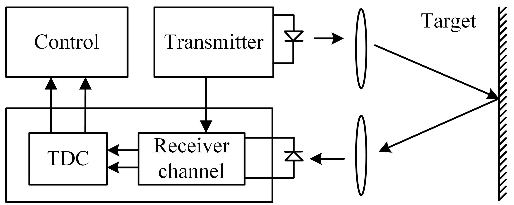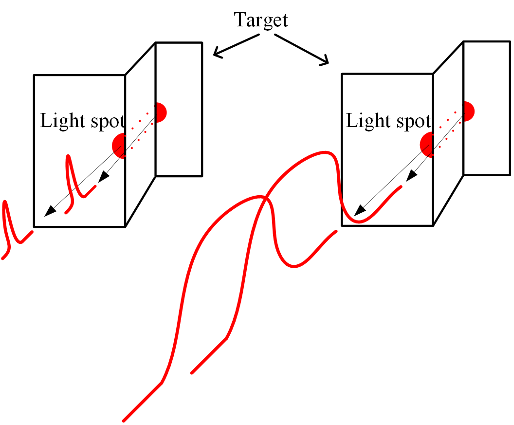




Did you find this useful? Give us your feedback






















22 citations
...The timing jitter, which randomly affects timing detection, is proportional to the rise time of the arriving pulse [17] so that shorter pulses give better precision but it calls for a receiver with a wider bandwidth [18]....
[...]
20 citations
...Recently, the pulsed width of sub-ns is typically exploited in the transmitter [18]....
[...]
14 citations
...L IGHT detection and ranging (LiDAR), using the timeof-flight method, is the most effective laser ranging technology for measuring the distance from the observer to the object [1]–[6]....
[...]
14 citations
...Recently, for the measurement range of a few tens of meters in pulsed ToF Lidar applications [8], [12], the laser pulse...
[...]
8 citations
...L IGHT detection and ranging (LiDAR) is a wellestablished technique for distance measurement and remote sensing which detects and analyzes the echo laser pulse resulting from interaction between the emitted laser pulse and the object [1]–[3]....
[...]
222 citations
...5 ns walk error with a ∼ 3 ns laser pulse [1], [4] or ∼ 1....
[...]
...The distance from the target can then be calculated based on the known velocity of light [1]....
[...]
182 citations
121 citations
85 citations
...detail in [29], is a multichannel TDC implemented in a 0....
[...]
81 citations
...‘enhanced gain switching’-based constructions are capable of producing laser pulses with an energy level of ∼ nJ and a pulse width of ∼ 100 ps [13], [14], [20]....
[...]
...As a result, laser pulses with an energy of >1 nJ (10 W) and length of ∼ 100 ps were produced with pulse current drive parameters of ∼ 10 A/1 ns/100 kHz [13], [14]....
[...]
The authors present a high precision time-of-flight ( TOF ) laser radar system based on energetic ( ~ 0. 6 nJ ) sub-ns laser pulses produced with a semiconductor laser diode.
For future improvements an increase in receiver bandwidth would improve the walk and jitter properties, but it would also need a TDC with better single-shot precision.
The laser diode transmitter used here had a MOSFET current driver and a quantum well GaAs/GaAlAs laser diode working in the enhanced gain switching regime [21].
The reverse bias voltage was set at 18.9 V (close to the breakdown point) in order to maximize the response (but without any notable rise in noise level).
Typical pulsed TOF laser radars intended for industrial applications use a laser diode transmitter producing high power (> 10 W) pulses with a typical length of < 5 ns (FWHM).
The walk error of the radar is ~ 500 ps within the dynamic range of 1:250, and the jitter of the leading edge of the detected pulse is limited by the TDC to ~ 10 ps at a high signal-to-noise ratio.
The target, with a steplike profile (2 mm in height), was moved vertically (total movement 2.5 cm) with regard to the optical axis of the laser radar while the radar was continuously measuring the distance.
The radar equation, giving an estimate for the received power, can be written for a non-cooperative (Lambertian) target as( ) = ⋅ ⋅ ⋅ ⋅ , (1) where ( )is the power of the receiver aperture as a functionof the distance Z, is the optical power of the transmitter, is the area of the receiver optics, is the reflectance of the diffuse target and is the efficiency of the optics [22].
W pulse from the abovementioned laser diode transmitter, a receiver aperture of 20 mm, optics efficiency of 0.7 and a target having ε = 0.1, the maximum achievable distance measurement range is ~ 10 m.
The minimum resolvable distance is reached when the echo pulses exceed the zero level (or the comparator threshold) between the two pulses, which would be around 0.4 m with this setup.
It is measured by sweeping the echo amplitude trough the dynamic range of 1:250 and the Fig. 13 shows the shift of the timing moment as a function of echo amplitude.
On the other hand, the transmitter enables one to use a pulsing rate of up to 100 kHz, which corresponds to a measurement time of 1 ms.
The distances of the two objects in the case shown in the figure were 4.5 m and 5 m (a step of 0.5 m) and the result indicates that the objects can be resolved.
Note also that the jitter at a low signal SNR is somewhat higher for a higher threshold (e.g. Vth is equivalent to SNR = 17), than for lower thresholds, on account of the decreasing signal slew rate near the peak of the signal pulse.